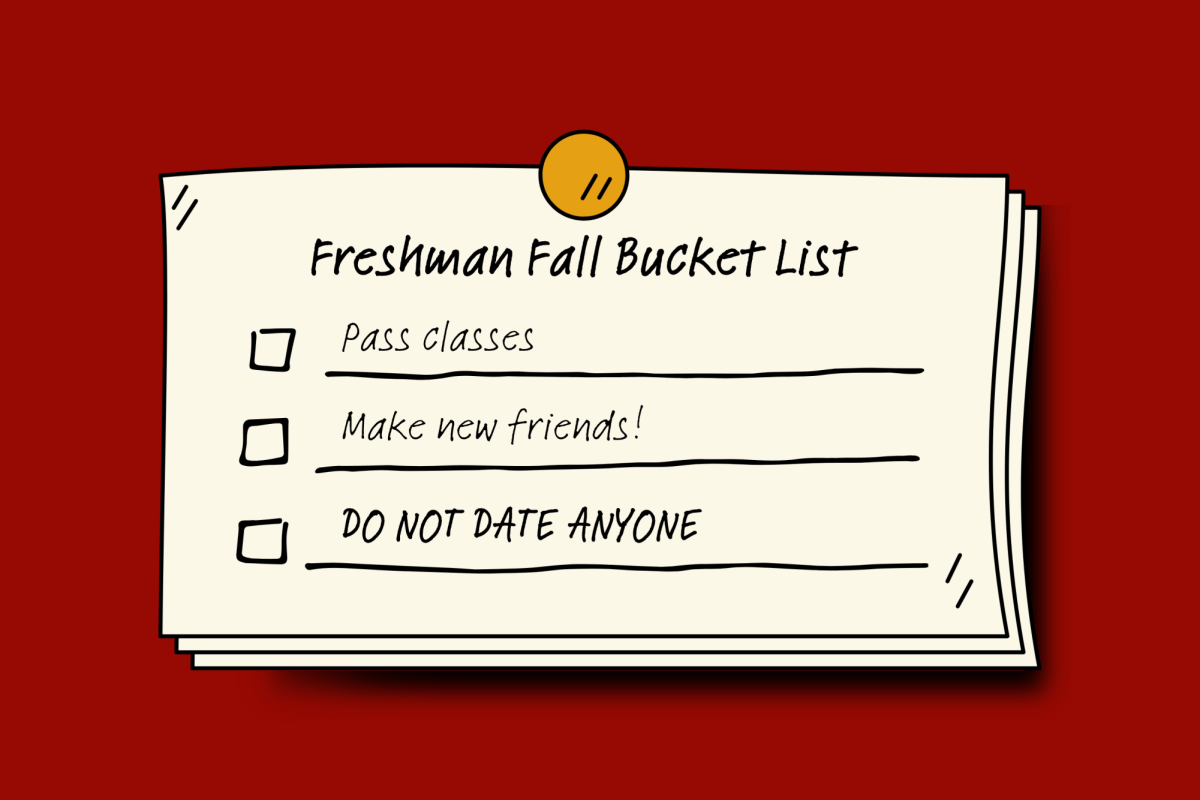When I applied to college, I purposefully chose schools I knew would let me live on campus for all four years. This was mostly because my previous attempts at cooking had invariably ended with my mother and I shouting about physics over a pot of boiling water, or I got my stirring privileges revoked about five minutes in for “a lack of vigor and commitment.” So when I found myself wandering the aisles of a Jewel-Osco in the fall of my junior year, desperately wondering what regular people ate (meatloaf?) and how on earth they made it (I still don’t know, if we’re being honest), I can confidently say I didn’t know the first thing about providing for myself.
Enter this advice column. It’s called “Best Guess,” and if it can help anyone as hapless as I’ve been throughout college, it will have done its job. For my first entry, I decided on an infinitely practical topic: How to feed yourself once you’re off the dining plan. It’s presented here as a series of bullet points, in no particular order except what I consider most pressing. Also, it assumes you have a working kitchen, a couple sizes of pots and pans and the ability to work an oven, a microwave and a stove. If you don’t know how to use any of that, call whoever taught you how to tie your shoes and ask them. Here we go!
- First up: What you ate growing up is what you’ll gravitate to now. Don’t fight it.
There’s no need to reinvent the wheel and start eating like a completely different person when you start college. The reason that Jewel-Osco alarmed me so much is that really, I should have taken the two buses and a train to the Super H Mart in Niles, which is where all the ingredients I actually knew how to use were. Life got way easier when I realized the easiest recipes I knew were Korean, and that I was most fluent in using ingredients found in Korean or Asian food. Obviously, this won’t necessarily be true for you, but most of the time the food you grew up on and watched people cook is going to come most naturally to you. You may not know what “grown-ups” eat, but if you remember your favorite dinner from when you were in the third grade, chances are you’re already halfway to being good at making that.
So we’ve made it to Jewel-Osco. How often do you go, and what do you get? These tips helped me.
- Accept that some things will go bad before you eat them.
You’re going to, at some point, eat two slices of bread and then discover blue mold on the entire rest of the loaf. And it will be fine. Just throw it out and take a week to soul search about how much bread you really eat, then come up with a solution (like not buying bread, freezing slices or a roommate split situation.)
- Find a salad you like.
Salad is a really capacious term here. It just has to have a decent amount of greens, so putting a lot of lettuce on rice and putting ranch all over it counts. Lettuce (or some other leafy green, like kale — you know what I mean) has to be an essential part of the dish. I am pretty sure eating chicken nugget caesar salad once a week actually saved my vitamin levels.
And to be honest, I’d count a chicken shawarma bowl with enough vegetables as a salad too. The point really is to get enough of the green stuff to prevent severe nutrient deficiency.
- Have two fruits and two veggies you can consume easily and buy within your price point to get at the grocery store every time you go. My criteria for these (they don’t have to be yours) are that they are easily edible raw or they’re frozen and will last until the end of time or you are proficient in at least two ways to cook them. It’s easy to switch them out, too. In the summer, when apples get mealy and gross, I am a nectarine gal!
At this point, the lineup is: cherry tomatoes, carrots, apples and a bag of lettuce. I nearly always have these four in the fridge! Also, in case of emergencies, frozen edamame and broccoli.
The same goes for carbs. Rice and bread are my best friends, but tortillas, pasta and potatoes are classic college options as well.
And now, for the kitchen.
- The freezer is your best, best, best friend. Nobody tells you this (I can’t imagine why not), but one thing about freezing temperatures is that no mold will ever grow there. The only thing that really happens is a downgrade in quality. Frozen and thawed grilled hot dogs are still edible, but (trust me) not good. But they won’t kill you!
I have pre-minced frozen garlic, frozen tomato paste, frozen chopped green onions, frozen cookie dough, frozen meatballs and frozen burritos in my freezer right now. I would survive the apocalypse and also midterm week.
In all seriousness, way more things than you think freeze and reheat fantastically (burritos and mochi muffins taste almost the exact same, and bread toasts right from the freezer!)!
- The spice rack is your other best friend.
I take personal offense to college cookbooks that have no spices (not even like, garlic salt) in their recipes. What, are we allergic to flavor, just because we’re taking classes? Investing in cinnamon, nutmeg and curry powder made everything I made taste way better, and they more than paid for themselves, given how much I used them. Get some paprika!
- Level yourself up.
When I became the kind of person that used lemons, onions and Greek yogurt regularly in my cooking, that was a huge deal. But it took three months of Cup Noodles and quesadillas (admittedly very good quesadillas with greens and stuff) to get there. Keep trying new things, but don’t beat yourself up if it doesn’t work out. You can always go back to the old standbys.
- There is no shame in Cup Noodles (and premade food)!
Cup Noodles is a college food for a reason. I eat it once or twice a week and it has never stopped being utterly delicious.
Also, having a stock of pre-made foods that don’t really go bad like soup, microwave meals and chicken nuggets is a great way to give yourself some breathing room during hard weeks. Keeping yourself fed is always better than not eating if you don’t feel like you have a meal ready. Microwaving a dinner is better than getting it from the library vending machine, but even that is better than nothing at all.
- Which brings me to my final piece of advice: If you heat something up hot enough and you are hungry enough, it will taste good.
Do with that what you will.
If you have a pressing problem you need advice on, or a response to this, email [email protected] with “Best Guess” in the subject line.
Mika Ellison is a Medill senior. She can be contacted at [email protected]. If you would like to respond publicly to this op-ed, send a Letter to the Editor to [email protected]. The views expressed in this piece do not necessarily reflect the views of all staff members of The Daily Northwestern.





